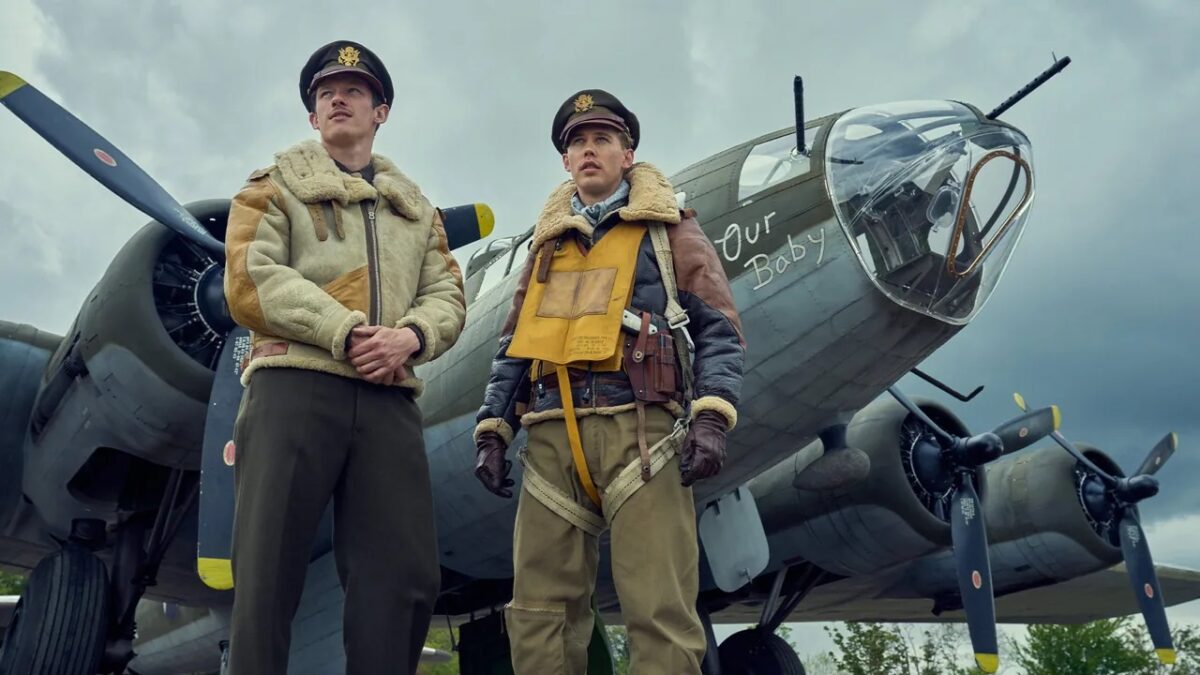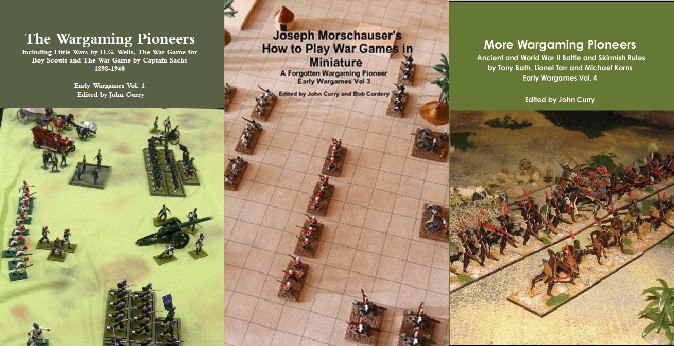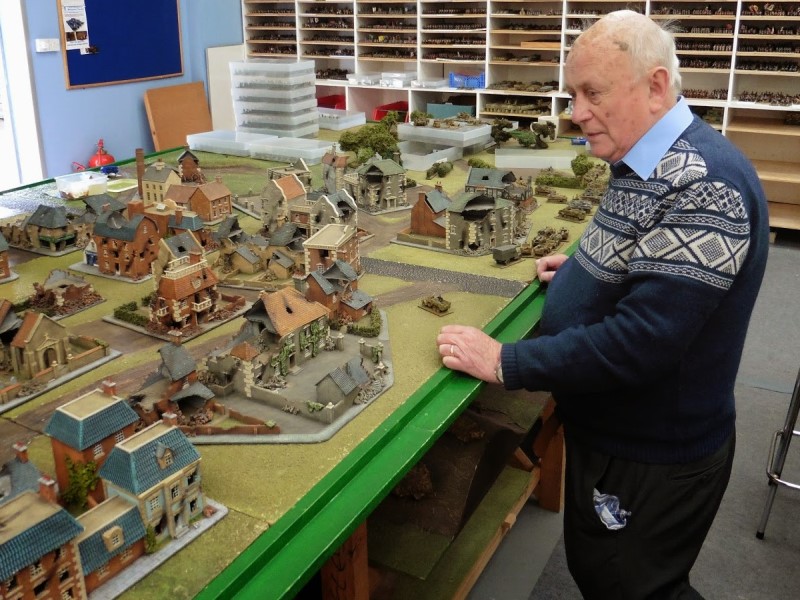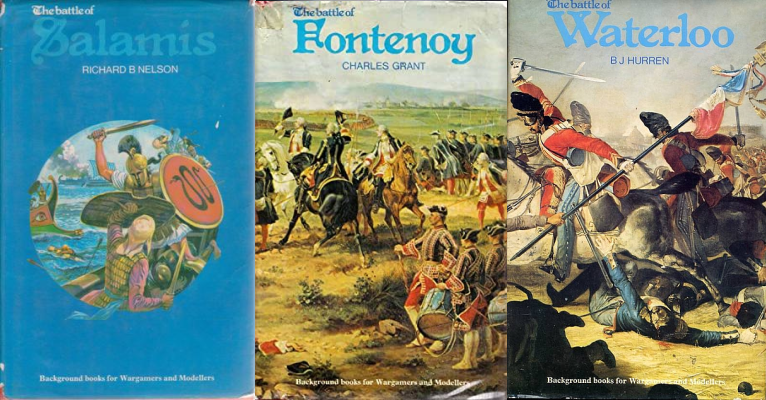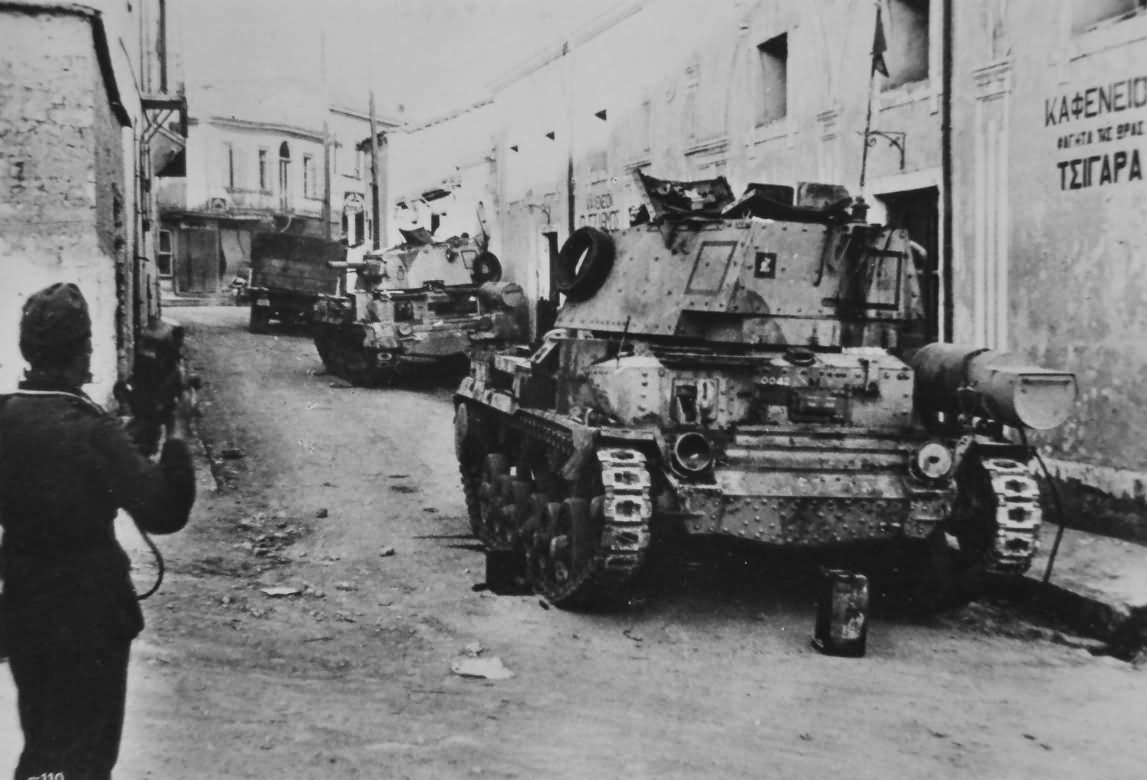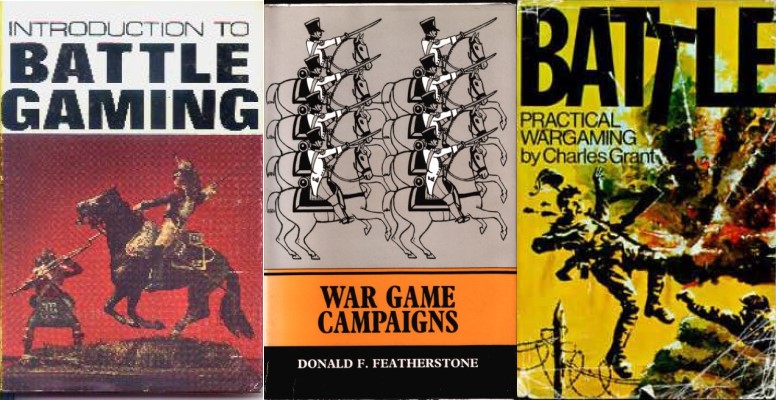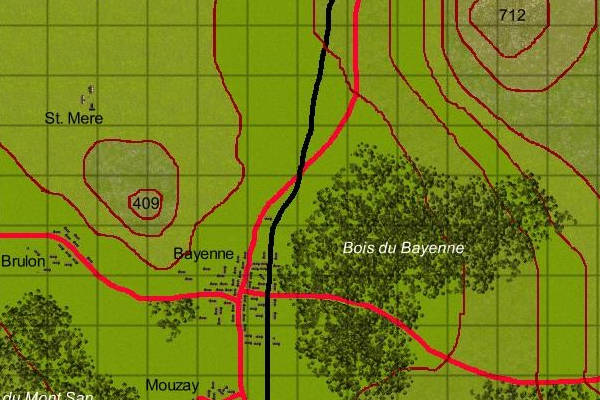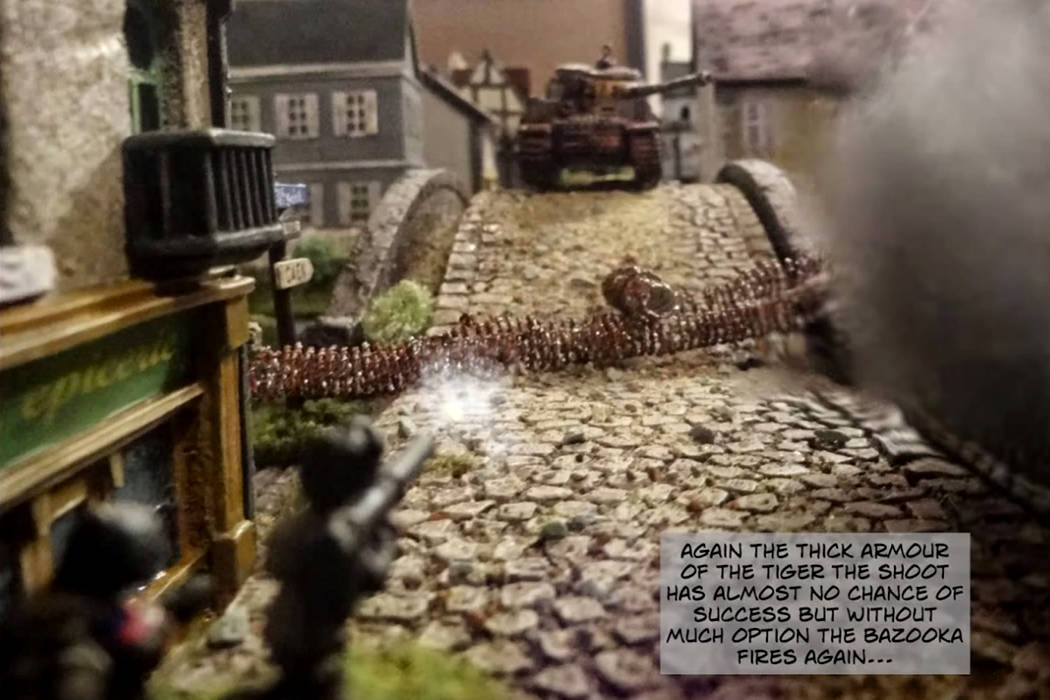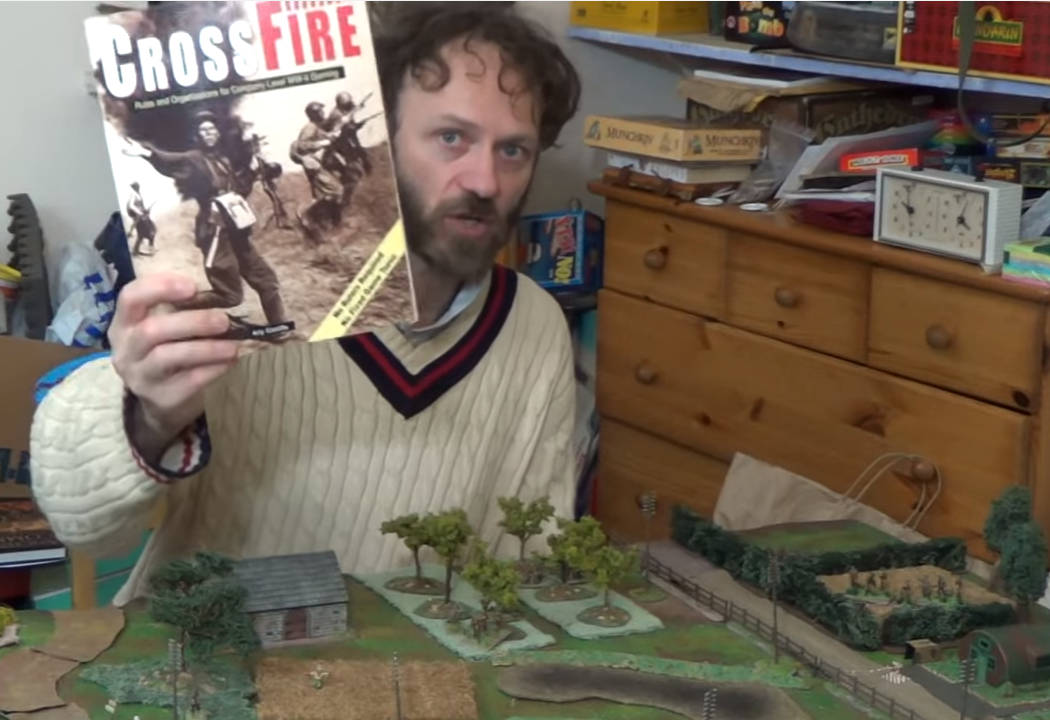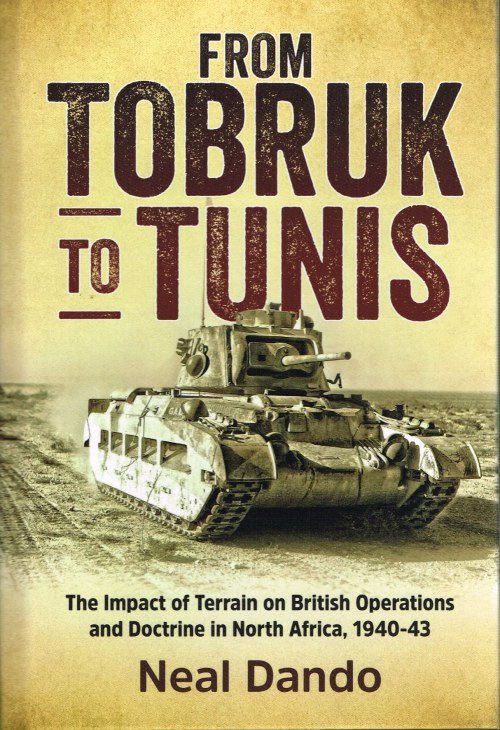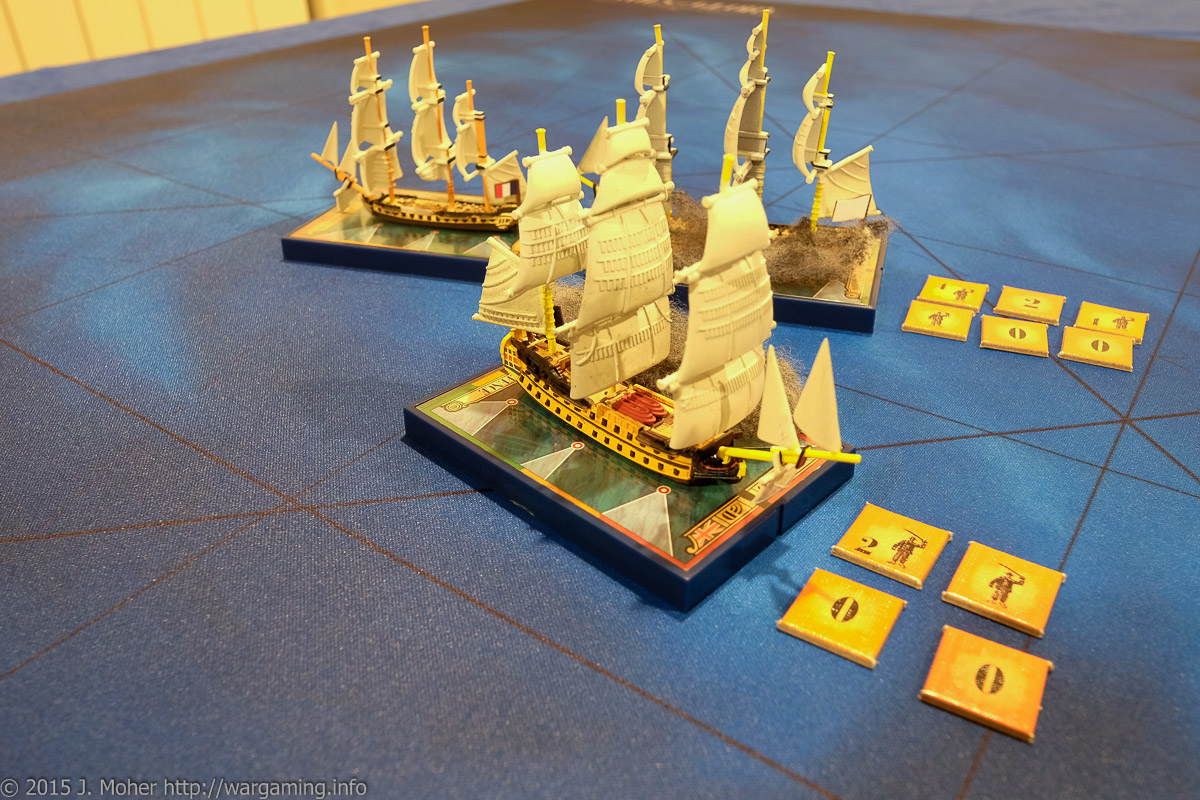The first 2 episodes of Masters of the Air dropped on AppleTV a few days ago and it wasn’t long before there were floods of posts about how awesome it was and about how stunning and full on the combat scenes were, and the usual nitpicking such as the Brit Bashing in episode 2. I got around to watching it a couple of days later, and I’ve been mulling over what I experienced for 2+ days before writing anything – and this is how I feel about it…
Continue reading “MotA First Impression: A Little Underwhelmed”Tag: Campaign
Wargaming Tomes Collection: Part Three
Continuing on from Wargaming Tomes Collection: Part Two here’s a look at the remaining parts of my classic wargaming books from the 1960’s through to 1990, including some classic book series such as the WRG Armies & Enemies and Tank Battles in Miniature by Don Featherstone & Bruce Quarrie; and some new publications of old material and authors from the classic era by John Curry and his History of Wargaming Project.
Continue reading “Wargaming Tomes Collection: Part Three”An Interview with Charles Wesencraft
A wargamer and author from that classic era of wargaming who perhaps has not always been recognised as much as the more well known ones (i.e. Donald Featherstone, Charles Grant, Tony Bath, Brigadier Peter Young, Terry Wise and then later George Gush, Stuart Asquith, etc) is Charlie Wesencraft. While many will know him and he probably is better known than Joseph Morschauser and David Nash (see my Wargaming Tomes Collection: Part One post) I for one did not see his books early on in my wargaming career (possibly due to being in New Zealand – although other local gamers here have said they saw them in libraries and such in the 1980’s or very late ’70s). I was interested to recently read an interview with Charlie Wesencraft that reinforces my view that he seems to have contributed more than just his 2 books in the early 1970’s to the classic wargaming era.
Continue reading “An Interview with Charles Wesencraft”Wargaming Tomes Collection: Part Two
One of the amazing things about vintage wargaming books, especially from the classic era (for want of a better term) of the 1960’s through until the early 1980’s, is how they still inspire today (at least in my mind) and in many cases the originality of ideas. As time goes by I have continued to collect more and more of these, and to ‘back fill’ my collection that started in the 1970’s and 1980’s, so continuing on from Part One here’s a look at more of my classic wargaming books from the 1960’s through to 1990, including some of the more obscure book series such Knight’s Battles for Wargamers, Concise Campaigns, Bellona Battles for Wargamers and Background Books for Wargamers and Modellers.
Continue reading “Wargaming Tomes Collection: Part Two”Mackay Force in the Florina Valley 1941
Quite sometime ago I wrote a simple resource document for a Spearhead mini-campaign set in the Florina Valley in April 1941. Mackay force was a weak-division sized force (of British, Australian & New Zealand troops) sent to cover the Monastir Gap; and prevent a German thrust down central Greece that would split the main Greek Army on the Albanian Front in the west from the British & ANZAC “W” Force (and remaining weak elements of the Greek Army) on the Bulgarian (eastern) front. It was necessitated by the sudden and very unexpected ‘rapid’ collapse of the Royal Yugoslavian Army, which, although not overly modern was still expected to have put up sufficient resistance to have at least held up the Germans for a few weeks and been able to at least hold a final defensive line in Southern Yugoslavia in co-ordination with the Greek Army on the Albania frontier.
Continue reading “Mackay Force in the Florina Valley 1941”Wargaming Tomes Collection: Part One
I recently moved house (well actually about 10 months ago – but it was inter-city to be fair), and I am only finally getting around to properly starting to unpack and sort my wargaming books, figures and terrain, and my somewhat extensive library of history books. Initially, on the book side, I’m focussing on my wargaming related titles and rulesets as these have the most immediate potential use; and as I have a particular fondness for old classic wargaming books (you know the ones by Donald Featherstone and Charles Grant and the others of their generation) I have quite a few of these; and thought I might post a few lists of titles to jog people’s memories and nostalgia…
Continue reading “Wargaming Tomes Collection: Part One”Engle Matrix Games
I’ve recently been introduced to Engle Matrix Games (well perhaps re-introduced as I had read about them briefly in an issue of the SOTCW Journal sometime ago) by Steve Thomas. This came about in a discussion around how to play a Crossfire campaign where the majority of players are in different countries. The idea is to find a system that is rule set agnostic, is ‘story’ driven, and is not constrained by technical details – in many ways in keeping with Crossfire’s own philosophy (although Engle Matrix games are quite suitable for any period and use with any miniatures rule set – heck you don’t even need miniatures or a set of rules to resolve the battles). “Engle Matrix Games are a simple low-tech game engine that allows players to do an amazing number of things” as one gamer has described (in a MS Word Doc). Continue reading “Engle Matrix Games”
Operation Crossfire: World Event Aftermath
As mentioned in my “Operation Crossfire: A World Wargaming Event” post, following on from the hugely successful “World Crossfire Day” event in 2009, Nikolas Lloyd organised Operation Crossfire in 2014; another global Crossfire event. You can read the details of some of the individual battles in my Operation Crossfire: The Battle Reports post. These previous posts feature the introductory briefing video and after action reports of some of the battle sectors, so now find out exactly what happened in the grand operation directly from the organiser himself… Continue reading “Operation Crossfire: World Event Aftermath”
Operation Crossfire: The Battle Reports
As described in my Operation Crossfire: A World Wargaming Event post Nikolas Lloyd had organised to stage a global Crossfire game that featured players in many countries all playing Crossfire games simultaneously, and games that were connected to each other and controlled (if that’s the right word) by an overall C-in-C who did not have direct visibility or access to any of the games other than via email! Continue reading “Operation Crossfire: The Battle Reports”
Operation Crossfire: A World Wargaming Event
Following on from the hugely successful “World Crossfire Day” event in 2009 is Operation Crossfire, another global Crossfire event staged in 2014. Originally mooted in July 2010 (see my Operation Crossfire: 11 September 2010 post) it was unfortunately postponed, but finally took place 4 years later. “Operation Crossfire” may well have been another world first as it was a wargame played on many tables around the world simultaneously, with two overall commanders basing their decisions on the e-mails sent to them during the game from the individual players and the the overall referee. View this introductory video by Nikolas Lloyd, covering the concept of the event and how it was planned and structured. This video served as the promotional advertisement for the event… Continue reading “Operation Crossfire: A World Wargaming Event”
The Impact of Terrain in North Africa 1940-43
From Tobruk to Tunis: The Impact of Terrain on British operations and Doctrine in North Africa, 1940-43 is a new book by Neal Dando, published just recently by Helion & Co. The author/publisher states “This book focuses on the extent to which the physical terrain features across Egypt, Libya and Tunisia affected British operations throughout the campaign in North Africa during the Second World War. One main theme of the work analyses the terrain from the operational and tactical perspective and argues that the landscape features heavily influenced British operations and should now be considered alongside other standard military factors.“
Continue reading “The Impact of Terrain in North Africa 1940-43”
Duty And Daring
It was a devastating battle, leaving several French and Spanish ships struggling to remain afloat. Proserpine (a 36-gun Frigate) was not involved in the battle, having been on picket duty nearby. Now having arrived at the scene of the battle to deal with it’s aftermath, Capitaine de corvette Cyrille Léopold Villeneuve (Proserpine’s commander) has been ordered by the fleet commander to assist the 3rd Rate, Commerce de Bordeaux, that has been damaged in the fight. The ship has suffered severe damage to masts, rigging, hull and rudder, and has no surviving ship’s boats. It’s officers and men have taken heavy casualties, have lost their captain, and jury rigged sails and rudder have proved inadequate for her to navigate on her own. The wind and tides are are driving the ship perilously close to reefs and shoals off the enemy coast. Proserpine must get to the Commerce de Bordeaux, take it in tow, and make her way to safer waters before the stricken 3rd Rate falls victim to the rocks or enemy vessels! Continue reading “Duty And Daring”
